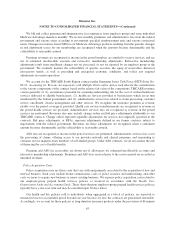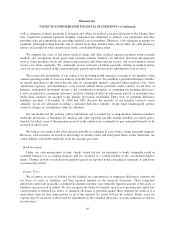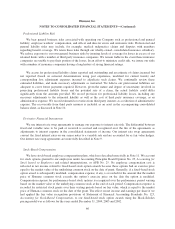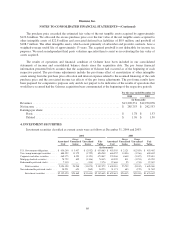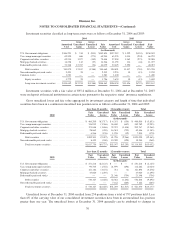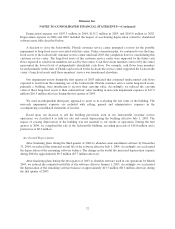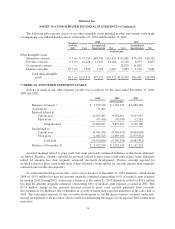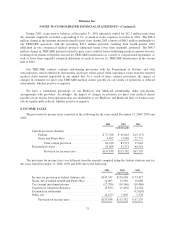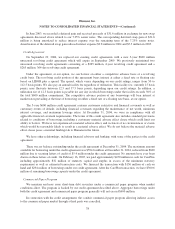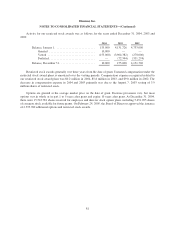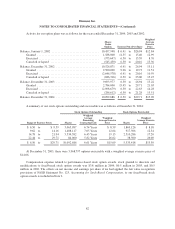Humana 2004 Annual Report Download - page 82
Download and view the complete annual report
Please find page 82 of the 2004 Humana annual report below. You can navigate through the pages in the report by either clicking on the pages listed below, or by using the keyword search tool below to find specific information within the annual report.Humana Inc.
NOTES TO CONSOLIDATED FINANCIAL STATEMENTS—(Continued)
Depreciation expense was $107.3 million in 2004, $115.2 million in 2003, and $105.0 million in 2002.
Depreciation expense in 2004 and 2003 included the impact of accelerating depreciation related to abandoned
software more fully described below.
A decision to close the Jacksonville, Florida customer service center prompted a review for the possible
impairment of long-lived assets associated with this center. Under a transition plan, we continued to use the long-
lived assets of the Jacksonville customer service center until mid-2003, the completion date for consolidating this
customer service center. The long-lived assets of this customer service center were supported by the future cash
flows expected to result from members serviced by that center. Cash flows from members serviced by the center
represented the lowest level of independently identifiable cash flows. For example, cash flows from members
located primarily in the state of Florida and serviced by the Jacksonville service center supported the Jacksonville
center’s long-lived assets until those members’ service was transitioned elsewhere.
Our impairment review during the first quarter of 2003 indicated that estimated undiscounted cash flows
expected to result from the remaining use of the Jacksonville, Florida customer service center long-lived assets,
primarily a building, were insufficient to recover their carrying value. Accordingly, we reduced the carrying
value of these long-lived assets to their estimated fair value resulting in non-cash impairment expenses of $17.2
million ($10.5 million after tax) during the first quarter of 2003.
We used an independent third party appraisal to assist us in evaluating the fair value of the building. The
non-cash impairment expenses are included with selling, general and administrative expenses in the
accompanying consolidated statements of income.
Based upon our decision to sell the building previously used in our Jacksonville customer service
operations, we classified it as held for sale and ceased depreciating the building effective July 1, 2003. The
impact of ceasing depreciation of the building was not material to our results of operations. During the first
quarter of 2004, we completed the sale of the Jacksonville building, recording proceeds of $14.8 million and a
pretax loss of $0.2 million.
Accelerated Depreciation
After finalizing plans during the third quarter of 2004 to abandon some enrollment software by December
31, 2004, we reduced the estimated useful life of the software effective July 1, 2004. Accordingly, we accelerated
the depreciation of the remaining software balance. The change in the useful life increased depreciation expense
during 2004 by approximately $9.3 million ($5.7 million after tax).
After finalizing plans during the first quarter of 2003 to abandon software used in our operations by March
2003, we reduced the estimated useful life of the software effective January 1, 2003. Accordingly, we accelerated
the depreciation of the remaining software balance of approximately $13.5 million ($8.3 million after tax) during
the first quarter of 2003.
72



